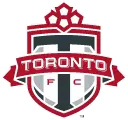What is a Sports PR Professional?

The work that public relations (PR) professionals do is vital in the sports industry.
From crisis management to social listening, the role of a sports PR professional revolves around maintaining an image, whether it is a favourite sports player, team, or brand.
Public relations is a highly strategic industry and an exciting career path for those dreaming of working in sports.
But before pursuing it, it’s worth understanding the role and what it entails.
Lucia Hubinska is a lecturer in Sports Public Relations and Communications, and explained to GIS what the role typically looks like.
“Day to day, PR professionals keep a close eye on social media and the press for brand mentions. They also do ‘social listening,’ which means scanning conversations to pick up on wider trends, moods, and sentiments across society.”
Adaptability is key to this. According to reports, 75% of PR professionals now use AI in their work, mainly to track public sentiment in real-time and gather actionable data.
“Beyond monitoring,” Lucia continued, “they regularly attend meetings, conferences, and events to build and maintain useful relationships. A big part of the job is also identifying which media outlets and journalists might be interested in the brand to help amplify its message.”
Examples of successful PR campaigns include Marcus Rashford, lobbying for free school meals. This included media interviews, open letters, and social media posts that eventually resulted in a change in government policy, positioning the player as a voice for social change.
PR professionals are also needed when things go wrong. Known as crisis management, PR teams proactively aim to limit the impact a crisis from the moment they become aware of it, ideally before it reaches the public eye, in an attempt to control the narrative.
They then move on to crisis communication, where they provide brands with advice on how to engage with their audience during the crisis itself. The modern PR specialist faces various hurdles in these situations.
“Digital platforms and social media are both a great opportunity and a big challenge,” Lucia said.
“Information spreads instantly, whether it’s positive or negative, and it often comes from unexpected sources. That makes it very hard to control a message or steer the narrative.
“In today’s environment, the power to shape conversations about a brand is much more diffuse, so PR practitioners have to be ready for the unexpected and agile in their response.”
As Lucia advises, adaptability is a necessary skill for succeeding as a sports PR professional. She then went on to discuss other attributes that are key to success in the industry.
“A PR professional needs strong strategic thinking and excellent communication skills. They should know what type of messaging resonates with different audiences, and which platforms and outlets would be most effective for reaching them. A solid grasp of both traditional and digital media is key. Just as importantly, they need to come be credible, trustworthy, and persuasive, since a big part of the role is building influence and helping clients reach their goals.”
To build these skills, education can go a long way. At GIS, our MSc Football Communications & Digital Marketing provides expert teaching to deepen your understanding of the media Lucia mentions, while also teaching the importance of Customer Relationship Management (CRM) and global fan engagement.
To learn more, click here.
Article by Zakaria Anani
You may also be interested in

Latest news
March 20, 2025 |
Careers in Australian Sport
Read Post

Latest news
July 14, 2025 |
Global Institute of Sport and EPIC Global Solutions Announce New Partnership to Support Positive Change in the Sports Industry
Read Post

Student Profiles
August 5, 2025 |
What Comes After Winning the Premier League: Wes Morgan on Studying with GIS
Read Post
Our Partners













